In the 1950s, one of the hottest bands in Bombay operated out of a home on Bandra’s Chapel Road. It was led by a trumpet player named Pete D’Mello (centre, standing), and his three brothers were at its core: Tony played trumpet and piano, Louis played the trumpet (extreme left), while Ralph played clarinet, saxophone and flute (extreme right). Their admirers included Niranjan Jhaveri and Coover Gazdar, the editors of the short-lived jazz magazine Blue Rhythm, who dropped in on the D’Mello home in September 1952. “What impressed me was their approach to music,” Gazdar wrote in the magazine later. “Though semi-professional, their love for jazz was akin to that of a collector, which in itself is something to write about.”

In addition to the music, the Blue Rhythm editors were very impressed by the eager preparations in the D’Mello household for Bandra Feast, which is celebrated each year on September 8, the birth anniversary of Christ’s mother, in the neo-Gothic shrine atop Mount Mary. “It seemed that the entire D’Mello family, aided by innumerable friends, were all doing their little bit to ensure that the fair was a success – and all this for no personal gain since the proceeds went to charity,” Gazdar marvelled. “There was no gainsaying their sincerity.”
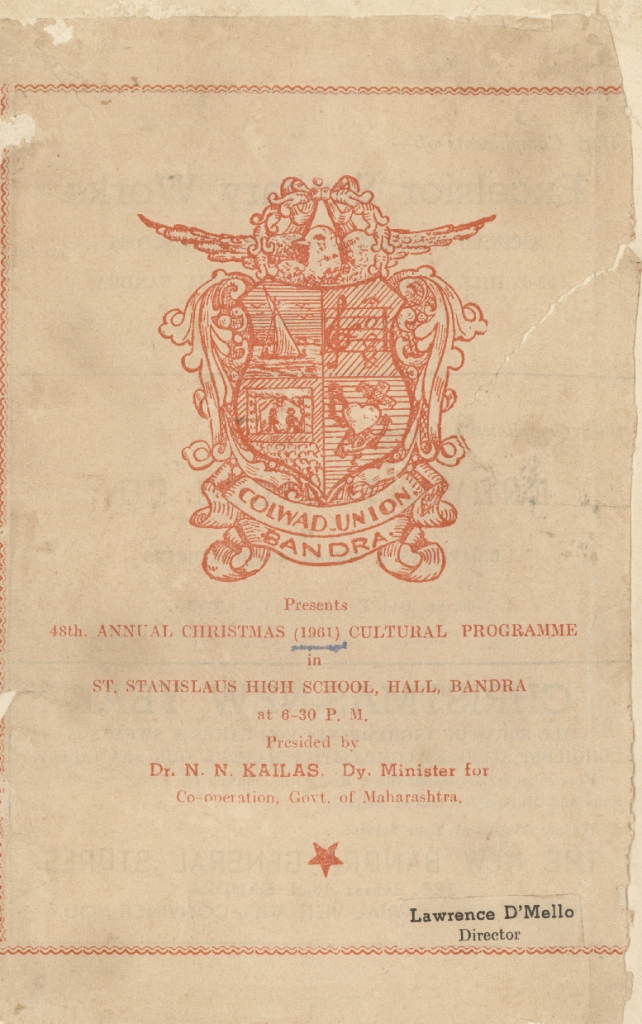 The neighbourly spirit in the D’Mello home was only to be expected. After all, their father, Lawrence, had devoted himself to demonstrating that music was a very natural expression of community life. Bandra was a very different place when the Blue Rhythm editors visited. The landfills that would eventually create the Reclamation had not yet begun, and the backdoors of the homes on Chapel Road opened out on a creek. Many residents of the area were Koli fishermen and the neighbourhood in which the D’Mellos lived was known as Colwad – a contraction of “Koliwada” or hamlet of the Kolis. The D’Mellos were Kolis themselves.
The neighbourly spirit in the D’Mello home was only to be expected. After all, their father, Lawrence, had devoted himself to demonstrating that music was a very natural expression of community life. Bandra was a very different place when the Blue Rhythm editors visited. The landfills that would eventually create the Reclamation had not yet begun, and the backdoors of the homes on Chapel Road opened out on a creek. Many residents of the area were Koli fishermen and the neighbourhood in which the D’Mellos lived was known as Colwad – a contraction of “Koliwada” or hamlet of the Kolis. The D’Mellos were Kolis themselves.
In 1914, Lawrence D’Mello had formed the Colwad Musical and Dramatic Union to “promote social and cultural welfare through the medium of music and drama”. The highlight of the Union’s year was its Christmas concerts, held on the grounds of St Peter’s Church. The programme consisted of songs, dances and plays that reflected the life of East Indians, as Christians native to the Bombay region are known. “The annual entertainment…was attended by hundreds of people from Bandra, the suburbs and Salsette,” recalled Ralph D’Mello, in an unpublished memoir titled Boy from Bandra. The crowds would come by bullock cart and stay overnight on the church grounds. Ralph made his performing debut as part of a group act in 1940, aged four and a half. In 1945, the concerts moved to the newly constructed hall of St Stanislaus School, above St Peter’s Church.
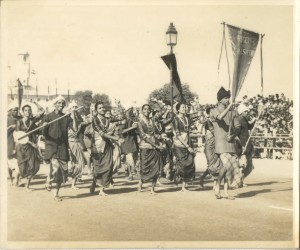 In the early years, the programmes consisted of songs aimed at moral instruction. Eventually, Lawrence D’Mello would compose about 250 songs “directed against the ills of the day”, Raph recalled, in addition to about 40 Marathi comedies. Between his duties as an assistant controller of stores in the Central Railway, Lawrence D’Mello was a passionate folklorist, spending hours transcribing East Indian folk melodies and composing new tunes.
In the early years, the programmes consisted of songs aimed at moral instruction. Eventually, Lawrence D’Mello would compose about 250 songs “directed against the ills of the day”, Raph recalled, in addition to about 40 Marathi comedies. Between his duties as an assistant controller of stores in the Central Railway, Lawrence D’Mello was a passionate folklorist, spending hours transcribing East Indian folk melodies and composing new tunes.
“We were always surrounded by music in Bandra: folk, religious and classical,” Ralph D’mello writes. “The East Indian love of music came from their ancestors, the Maharashtrians, who had a song for every hour and chore of the day.” When the Portuguese came to acquire Bombay and its environs in the second part of the sixteenth century, their new converts to Christianity – who would later call themselves East Indians – were taught how to play Western musical instruments and to read and write Western notation. Soon enough, traditional Maharashtrian melodies acquired a new twist. Among the earliest musical artefacts from that time is the Krista Purana, an epic poem about the life of Christ composed in Marathi and Konkani by the English Jesuit, Thomas Stephens. The poem consists of 11,000 stanzas and is still sung in some parts of Bandra and Bassein during Lent.
In 1945, Lawrence D’Mello became the leader of St Paul’s Band, which had been founded on Easter Day, 1890, by Father John D’Mello. The bandsmen, dressed in white with red collars, cuffs and trimmings, performed at church processions from Dadar to Bassein and Thane, and at bandstands around the city. Their repertoire included marches like Old Comrades, Colonel Bogey and Bozda, recalled Ralph D’Mello, who joined the band – which practised in the family’s living room – as a teenager.
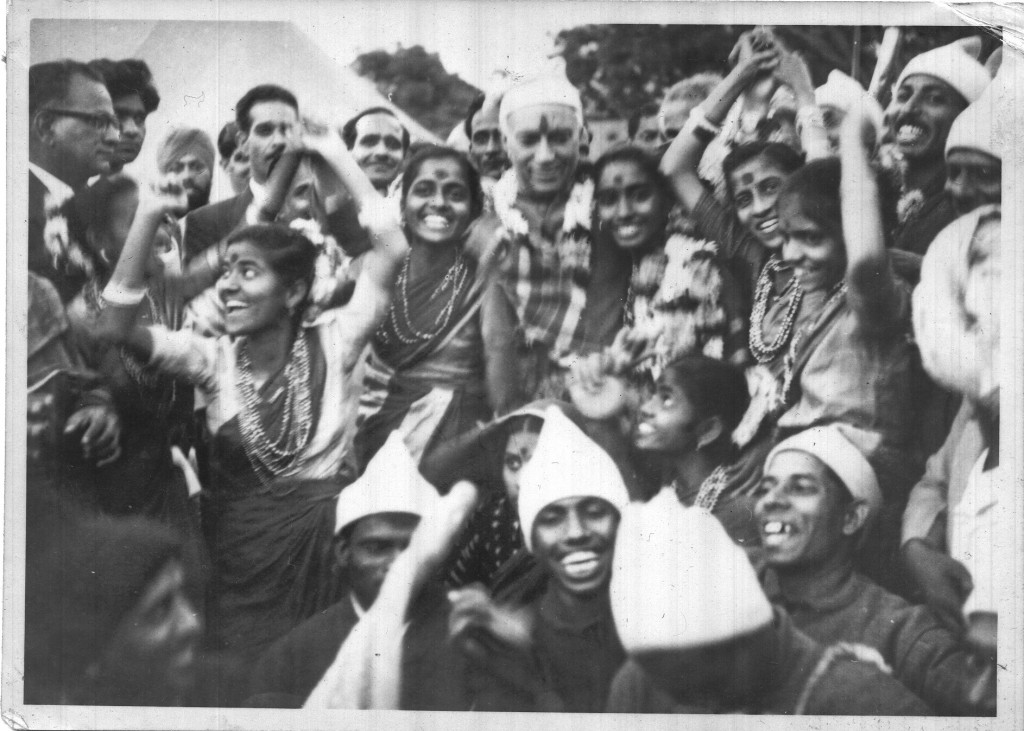 The Colwad Union’s highest point came in 1961, when it was nominated to represent the new state of Maharashtra – founded only seven months before – in the Republic Day parade in New Delhi. The troupe from Colwad reached the capital on January 20 and was allotted Tent No 127 in the Talkatora Folk Dancers Camp, which was filled with performers from the 17 states that constituted India at that time. “The vast forest-like area was transformed a huge Carnival Town with diverse languages, colourful costumes, queer customs, strange musical instruments, song, dance and joy,” a Colwad Union brochure recalled later.
The Colwad Union’s highest point came in 1961, when it was nominated to represent the new state of Maharashtra – founded only seven months before – in the Republic Day parade in New Delhi. The troupe from Colwad reached the capital on January 20 and was allotted Tent No 127 in the Talkatora Folk Dancers Camp, which was filled with performers from the 17 states that constituted India at that time. “The vast forest-like area was transformed a huge Carnival Town with diverse languages, colourful costumes, queer customs, strange musical instruments, song, dance and joy,” a Colwad Union brochure recalled later.
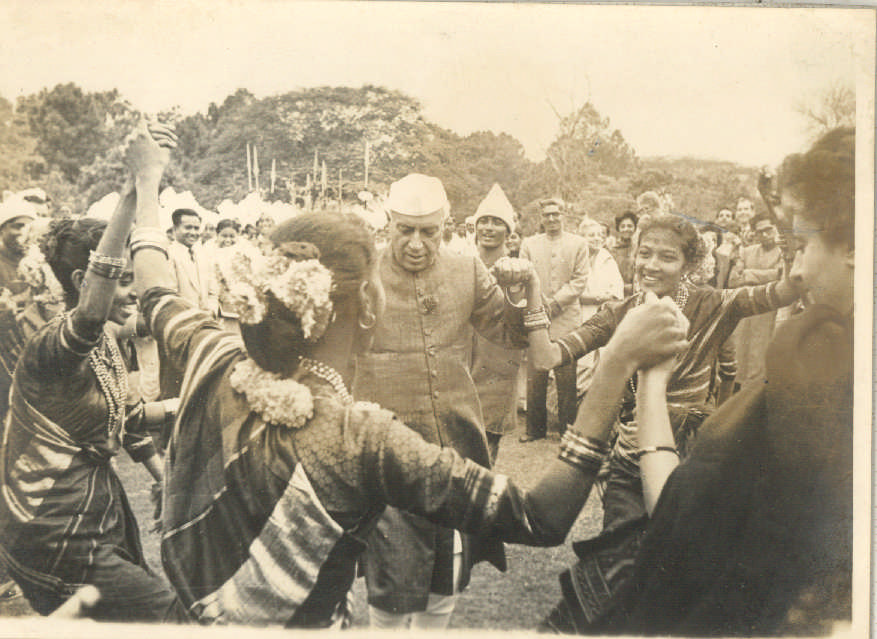 The Bandra boys and girls seem to have been a hit. “Their catchy songs and lively dances became the craze of Delhi,” the brochure reported modestly. “The gorgeousness of the women’s saris and artistic cholis with shining jewellery interested Pressmen, Reporters, Journalists and Cameramen.” They evidently also caught the attention of Prime Minister Nehru, who visited the camp on January 23. The Bandra troupe swarmed around him, and put a Koli cap on his head.
The Bandra boys and girls seem to have been a hit. “Their catchy songs and lively dances became the craze of Delhi,” the brochure reported modestly. “The gorgeousness of the women’s saris and artistic cholis with shining jewellery interested Pressmen, Reporters, Journalists and Cameramen.” They evidently also caught the attention of Prime Minister Nehru, who visited the camp on January 23. The Bandra troupe swarmed around him, and put a Koli cap on his head.
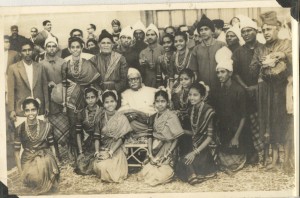 On January 25, they performed at a Concert of Songs of National Builders at All India Radio. The Colwad tune praised Bombay’s development, mentioning the presence of the Aarey Milk Colony, the International Airport, the Trombay Atomic Power station and “deep sea fishing” which had been made possible with “the mechanisation of fishing boats”.
On January 25, they performed at a Concert of Songs of National Builders at All India Radio. The Colwad tune praised Bombay’s development, mentioning the presence of the Aarey Milk Colony, the International Airport, the Trombay Atomic Power station and “deep sea fishing” which had been made possible with “the mechanisation of fishing boats”.
That wasn’t the last time an East Indian folk tune was performed at the Republic Day celebrations. In 1965, an army marching band performed this tune, which should be familiar to anyone who has ever attending a Catholic wedding in Bombay.
Colwad by naresh fernandes
The tune is called Colwad and the theme draws from the traditional East Indian song, Gharavari, which forms part of the “masala” section that is performed as the crescendo of many Catholic celebrations. The musicians belting out this tune often start with the Marathi lyrics (“Gharavari, gharavari, sonyachi kavla gharavari”) and then sing an English translation: “Top of the house, top of the house, golden tiles on top of the house…”
I found this march on an album titled Martial Music of the Indian Army, buried amidst a pile of records at the famous New Gramophone House on Delhi’s Chandani Chowk and was lured into paying a hefty 500 rupees for it because of one paragraph in the liner notes. “Colwad was the name of a village in the Bombay coast; it is now part of Bandra. This quick march is based on folk tunes of this old village which are still sung today.”
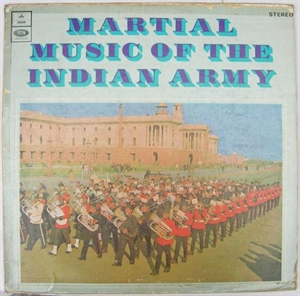 The composer of the tune, it turned out, is Ralph D’Mello. Ralph was the only one of the D’Mello brothers who went on to make music his career. In the 1950s, as he played jazz with his brothers, he also sat in on clarinet with the Bombay Symphony Orchestra. In 1959, the orchestra had a guest conductor: Howard Boatwright, a Fulbright scholar who was helping music teachers at the Bharatiya Vidya Bhavan in Chowpatty understand Western pedagogic techniques. In the US, Boatwright was an associate professor at the Yale Music School and conducted the Yale Symphony Orchestra. He was so impressed by the young Ralph D’Mello that he recommended him for a scholarship at his institution.
The composer of the tune, it turned out, is Ralph D’Mello. Ralph was the only one of the D’Mello brothers who went on to make music his career. In the 1950s, as he played jazz with his brothers, he also sat in on clarinet with the Bombay Symphony Orchestra. In 1959, the orchestra had a guest conductor: Howard Boatwright, a Fulbright scholar who was helping music teachers at the Bharatiya Vidya Bhavan in Chowpatty understand Western pedagogic techniques. In the US, Boatwright was an associate professor at the Yale Music School and conducted the Yale Symphony Orchestra. He was so impressed by the young Ralph D’Mello that he recommended him for a scholarship at his institution.
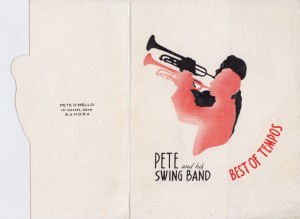 After getting his degree at Yale, D’Mello returned to India and the only job that seemed to let him use his musical education was at the Military School of Music in Pachmarhi, where bandsmen for the armed forces were trained. For three years from 1964, Ralph D’Mello served as Assistant Director of Music for the Indian Army. In addition to his teaching, he also did some composing. He then returned to the US to get a PhD at Syracuse University. He spent his career teaching at Syracuse University, eventually becoming assistant to the chairman of the music education department. In 1971, he was among the founders of the Society for New Music in New York, which encouraged composers to write new classical music works. He still performs regularly.
After getting his degree at Yale, D’Mello returned to India and the only job that seemed to let him use his musical education was at the Military School of Music in Pachmarhi, where bandsmen for the armed forces were trained. For three years from 1964, Ralph D’Mello served as Assistant Director of Music for the Indian Army. In addition to his teaching, he also did some composing. He then returned to the US to get a PhD at Syracuse University. He spent his career teaching at Syracuse University, eventually becoming assistant to the chairman of the music education department. In 1971, he was among the founders of the Society for New Music in New York, which encouraged composers to write new classical music works. He still performs regularly.
Decades after Ralph D’Mello wrote Colwad, Koli tunes have continued to inspire composers. Here’s what Nadeem and Shravan came up with in Dil Hai Ke Manta Nahi. Listen for echoes of Colwad in the second section of the song.


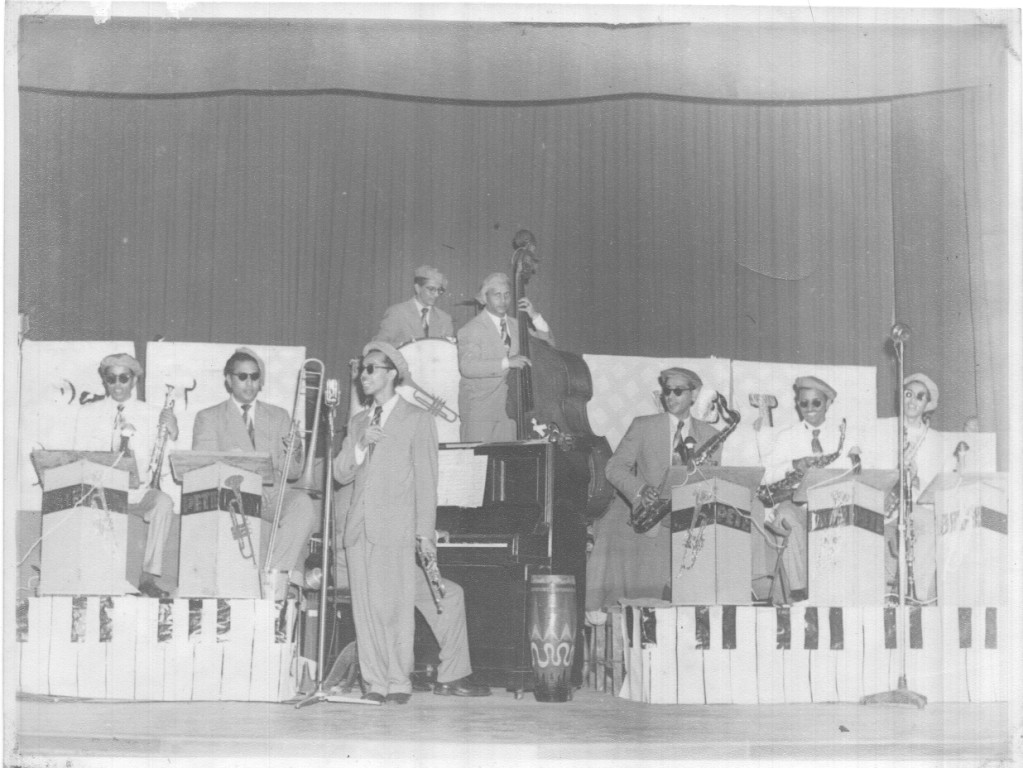
10 comments
Can’t remember the last time I read something so interesting and learned something new. I now know the story behind one of the most overplayed songs from growing up that you just don’t hear anymore. Thanks for sharing.
Thanks, Prashant. For some reason, I can’t seem to find a version of the original tune, Gharavari, to post here. That would really lock this whole thing into place.
Thanks for putting it on the FB . I for one shall request for the “Colwad” score next time I get close to a military band. There are some lovely folk songs in different languages from various parts of our country that our military bands have adapted beutifully in their regular music banks. Very interesting – the history of Bandra’s love for music – in those good old days. Can the times be revived ?
Vijay,
You’re quite right about military music drawing from various folk traditions. You can listen to more Indian military marches here:
http://www.bharat-rakshak.com/BANDSTAND/armyband.html
Best,
Naresh
This is the best ever story I have read in a long,long time about the music of the Bombay that was Touching and just so beautiful BTW the Army band performs this as part of their repertoire at the Annual function in Delhi called ‘Beating the Retreat’ soon after Republic Day
Being Catholic and having listened to stories from my dad who grew up in Bandra around that time; the start of this piece is oddly nostalgic. And I read the rest of it with tune of Gharavari on the trumpet playing in my head. 🙂 Beautiful, beautiful read!
hi naresh, superb..this is awesome stuff..i am going to lay my hand on this book.
My father played with Lawrence and the St Paul’s band.
Simply awesome. Myself being and eastindian from Bandra makes me feel proud.
Dear Naresh,
Last year I spent 2 days/nights at Farry’s Hotel Gorai in May . At about 12,30 AM we were woken up by a wedding ‘ROSSE procession. They were playing this music. I went out to watch. I was offered a swig of country liquor by one of the friendly ‘uncles’. I could not help myself so I joined in the dancing for a while and really was swinging. Anyone who visits Gorai during the Wedding season in May on a Saturday will have a good chance of reliving this wonderfull atmosphere. EVEN TODAY !!!
Gordon Rodricks
Dear Friend,
I happened to visit this very special website as I was looking for history of East Indians. Thanks for giving such beautiful information which I never knew. God bless u.